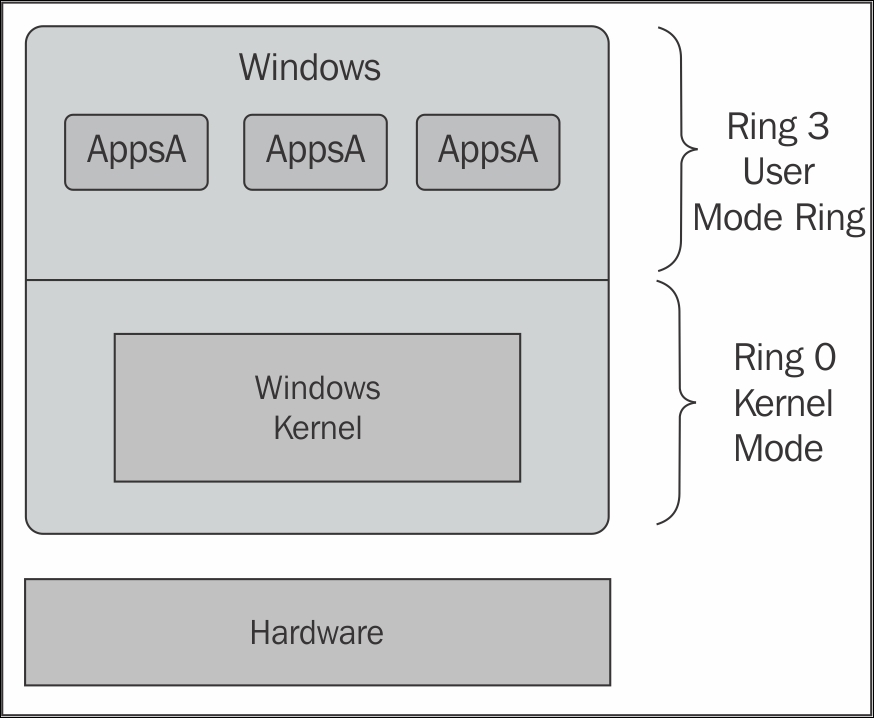Knowing how Hyper-V works and how its architecture is constructed will make it easier for you to understand its concepts and operations. The following sections will explore the most important components in Hyper-V.
Before we dive into the Hyper-V architecture details, it will be easy to understand what happens after Hyper-V is installed, by looking at Windows without Hyper-V, as shown in the following diagram:

In a normal Windows installation, the instructions access is divided into four privileged levels in the processor called Rings. The most privileged level is Ring 0, with direct access to the hardware and where the Windows Kernel sits. Ring 3 is responsible for hosting the user level, where most common applications run and with the least privileged access.
When Hyper-V is installed, it needs a higher privilege than Ring 0. Also, it must have dedicated access to the hardware. This is possible due to the capabilities of the new processor created by Intel and AMD, called Intel-VT and AMD-V respectively that allows the creation of a fifth ring called Ring -1. Hyper-V uses this ring to add its Hypervisor, having a higher privilege and running under Ring 0, controlling all the access to the physical components, as shown in the following diagram:

The OS architecture suffered several changes after the Hyper-V installation. Right after the first boot, the Operating System Boot Loader file (winload.exe) checks the processor that is being used and loads the Hypervisor image on Ring -1 (using the files Hvix64.exe for Intel processors and Hvax64.exe for AMD processors). Then, Windows Server is initiated to run on top of the Hypervisor and every VM that runs beside it.
After Hyper-V installation, Windows Server has the same privilege level as a VM and is responsible for managing VMs using various components.



